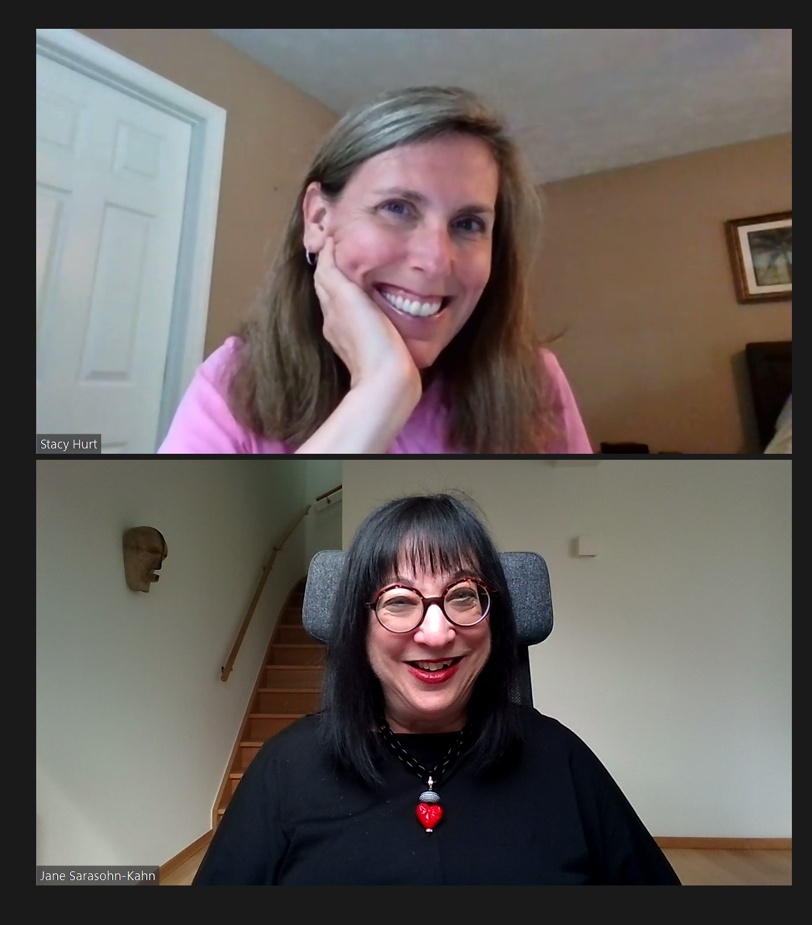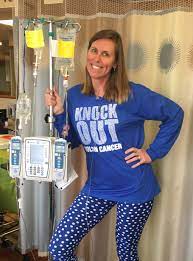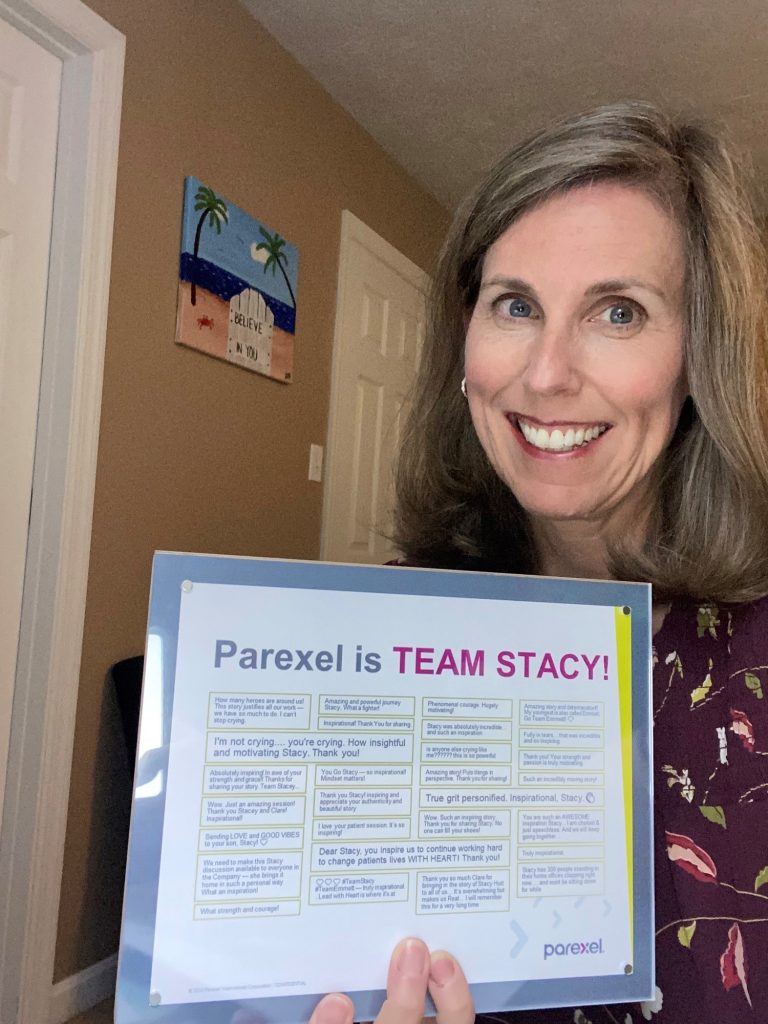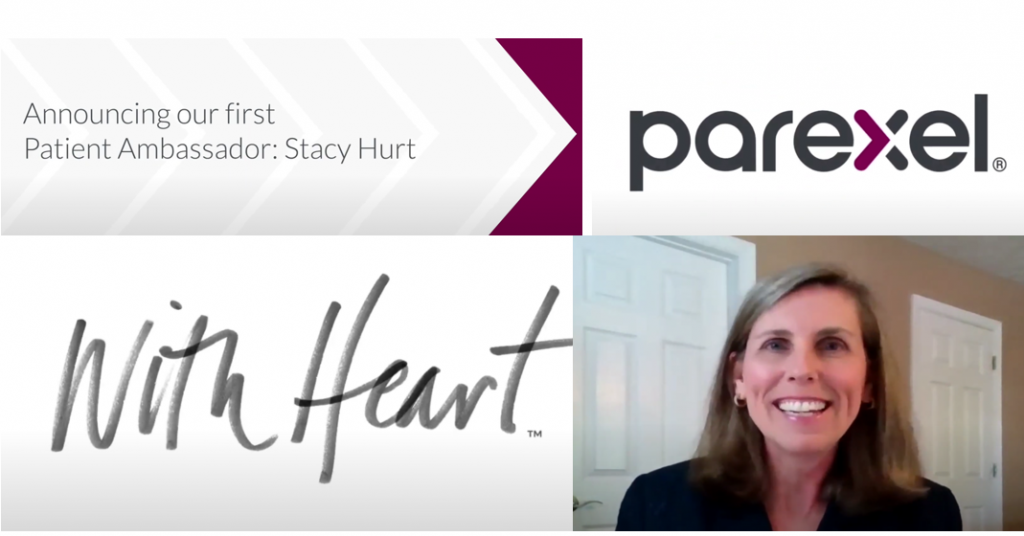[ad_1]
“I am a health care executive who happens to be a patient, caregiver, and advocate,” Stacy Hurt explained to me in a Zoom chat we shared on 31 May.
I asked her to meet with me to discuss her professional news update: being appointed Parexel’s first Patient Ambassador.

My Zoom invitation to Stacy was a very convenient excuse for me to catch up with a friend in the field: we have known each other since Stacy started to grow her health-social media presence on Twitter.
And that involvement in social media is intimately woven with Stacy’s patient advocacy journey….for herself and for her son, Emmett.
Health care executive first; patient advocacy followed.
Stacy doubled down on the explanation of being a “healthcare executive” before morphing into patient advocate. In that game we play of “what I want to be when I grow up,” Stacy had not planned to work in a career as patient advocate.
“I like business and people. I wanted a robust career in healthcare management, but it just so happened that my career got disrupted…twice,” she recounted.
The journey to her new role as Patient Ambassador with Parexel was really 16 years in the making, advocating for her son, Emmett, and for her own cancer patient persona.

Truth be told – and Stacy is at her root, a truth-teller — “advocating” is too-simple an adjective to describe what Stacy has undertaken in her caregiver role. Consider: fighting health insurance appeals, crafting countless medical necessity letters, justifying being discharged against medical orders, and other battles fought hand-in-hand with her husband on behalf of Emmett and his well-being. Born in 2005 and diagnosed a year later with a constellation of conditions, caregiving for Emmett is full-time for both of his parents.
They are never seen in the same room at the same time, working as “Clark Kent and Superman” – tag-teaming with love, resilience, and faith. [To get a sense of what that caregiving experience is like, check out her blog post, Confessions of an Exhausted Caregiver].
Tallying up the years between her working in physician practice management and the pharmaceutical sector, as well as time spent in health advocacy, “I’ve been 25 years in health care,” Stacy calculated.
Born and raised in Pittsburgh, Stacy went to Penn State for undergraduate work, and earned two advanced degrees at University of Pittsburgh: an MBA and a Master of Health Administration.

Stacy first stepped a toe into social media via online support groups focused on rare diseases for Emmett. Fast-forward to her diagnosis in 2014 with Stage IV colorectal cancer, when Stacy emerged as an expert advocate due to her previous personal and professional experience. At one point, she was volunteering for nine patient support organizations during her cancer battle including the American Cancer Society, Clara Health, The Colon Club, Colon Cancer Coalition, Colon Cancer Foundation, Colorectal Cancer Alliance, Fight Colorectal Cancer, Lyfebulb, and UPMC – where Stacy was a patient in the Integrative Oncology Program.
She spoke out to help others on how to fight for a PET scan, how to get your patient data when denied access, and how to advocate for yourself, among other self-taught and peer-to-peer honed skills.
By 2017, she was finishing active treatment and emerging victorious against pretty big clinical odds, only an 8% chance of five-year survival. In 2018, Stacy launched her website, began blogging, and got social media traction when HIMSS appointed her a digital influencer. All along, and even to this day, she remains under close surveillance by her oncologist with bloodwork and scans.
“Then 2020 was the Twitter take-off,” she explained, launching her Twitter handle @Stacy_Hurt.

Stacy brings the personal together with the professional, culminating in her next chapter as the first Patient Ambassador on behalf of Parexel.
“My work is my life, and my life is my work,” she confessed. “I’m fortunate that a company sees value in this to help improve clinical trials for patients as well as inform and actively engage their clients.”
“I live this life and people in the health care industry – payors, policymakers, suppliers, providers – need to know that story from the inside.”
Parexel is a Clinical Research Organization that crafts and conducts clinical trials on behalf of life science companies.
Parexel discovered Stacy who was delivering a keynote speech at DPHARM 2021. Following the program, the company asked her to give a talk at their global leadership summit in January 2022.
After Stacy appeared in the company’s town hall, members of the organization contacted her to follow up with another speaking engagement on their podcast for Rare Disease Day…and that was the origin story of her evolution as Patient Ambassador with Parexel.

Officially, Stacy will play a consultative role within Parexel, guiding the design and delivery of patient-centered clinical trials. Her over-arching objective is to scale and sustain change in life sciences that brings the patient voice to research and commercialization for life-saving products.
So what’s the future of “Patient Ambassadors,” I asked one of the first in the marketplace.
Stacy foresees that every life science company will embed the patient leadership role in their organizations. Furthermore, she believes every health care enterprise should engage executives who identify as “patients” in management positions – in health systems, health plans, and provider systems.
“Every key stakeholder group in health care should have a Chief Patient Officer,” Stacy envisioned.
Why should this be an imperative?
Stacy responded through a personal story about dealing with a health plan that denied one of her family’s medical claims.
She was sitting in a closed-door room with a complement of medical directors and legal staff who, in her words, “had never walked a step in patients’ shoes,” yet they are denying claims, making these life-and-death decisions.
Stacy was fighting for home nursing services for Emmett. “I looked at them and asked, ‘Do any of you have a special needs child, disabled, who relies on you entirely for their life?’”
That would be, collectively, a “no.”
“I said, OK, great. You are all welcome to come to my house and spend a day with me. Come on over tomorrow and see what I do. Take a field trip,” she proposed to them.
There were no takers.
She concluded our chat with a vision and a hope: “I want a whole army of Stacy’s out there serving this role across every health care entity to improve equity, access, and outcomes.”
No doubt Stacy will continue to inspire that army of emerging executive patient advocates. Her email box and Twitter messages attest to a growing cadre of people (#TeamStacy) who want to be part of that influence and revolution.
Follow the ongoing adventures of Stacy as Patient Ambassador and Caregiver at her blog site, https://stacyhurt.net/
[ad_2]
Source link



:quality(80))


